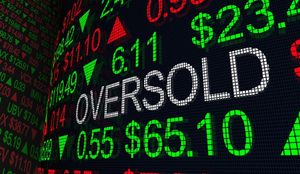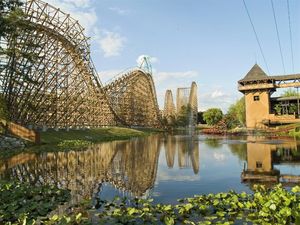
By the time winter arrives, the charm of an old fireplace is impossible to ignore. For many homeowners, it’s more than a source of heat, it’s a centerpiece of tradition, craftsmanship, and memory. But as energy prices rise and environmental standards tighten, that same fireplace can quietly become a drain on both efficiency and the planet.
To bridge the gap between nostalgia and sustainability, homeowners are increasingly turning to companies such as The Great Fire Company, which specialize in transforming classic hearths into energy-efficient systems. From modern inserts that fit within century-old mantels to venting technologies that preserve the look of brick and stone, these solutions are proving that it’s possible to keep a historic home warm without letting its character go up the chimney.
Old Charm, New Challenges
America’s housing stock is aging. According to the U.S. Census Bureau, nearly 40% of owner-occupied homes were built before 1970, a time when insulation standards were minimal and fireplaces were built primarily for aesthetics or basic heat. Open wood-burning hearths, while visually appealing, are notoriously inefficient: up to 25% of indoor heat can be lost through an unsealed chimney, according to the U.S. Department of Energy.
“People are often shocked to learn that their fireplace can actually make the house colder,” says a certified home-energy auditor in New England. “As warm air escapes up the flue, cold outdoor air gets pulled into the home through cracks and vents.”
Beyond inefficiency, many older systems release more particulates and carbon emissions than modern heating alternatives. As cities introduce restrictions on open-burning fireplaces and push for cleaner heating, retrofitting has become both a preservation effort and an environmental necessity.
The Modern Hearth: Inserts, Liners, and Smart Controls
The most common retrofit begins with a fireplace insert, a self-contained unit that fits into an existing masonry or metal fireplace. Inserts can run on gas, electricity, or high-efficiency wood systems that meet strict emissions standards.
Manufacturers like The Great Fire Company now design inserts that mimic the glow and texture of traditional hearths while drastically reducing energy waste. Sealed glass doors prevent drafts, while thermostatic controls allow homeowners to regulate heat more precisely than ever before.
Another popular solution is chimney relining, which replaces deteriorating clay liners with stainless steel or flexible metal options. These modern materials improve draft control, enhance safety, and reduce heat loss. For homes with aesthetic restrictions, such as those in designated historic districts, thin, flexible liners can be installed without altering the original masonry.
Preserving History Without Compromise
Retrofitting a heritage home is a delicate balance. Preservationists aim to maintain original craftsmanship, hand-laid brickwork, carved mantels, ornate stone surrounds, while engineers push for airtight seals and high-efficiency performance.
According to the National Trust for Historic Preservation, retrofits should follow a “reversible intervention” principle: any modern modification should be removable without damaging original materials. That means homeowners often look for modular systems that slide into place rather than requiring demolition or reconstruction.
Architects specializing in historic properties say the process begins with an energy audit and a visual survey of the fireplace’s structural integrity. “It’s not about replacing old with new,” one architect explains. “It’s about making old work in new ways.”
In practice, that can mean installing an electric insert behind a cast-iron frame, adding insulation to the hearth cavity, or sealing the chimney damper to stop airflow when the fireplace isn’t in use. Even small measures, like adding a custom glass door, can make a dramatic difference in seasonal heating costs.
Design Meets Efficiency
The aesthetic appeal of a well-designed fireplace still drives most retrofit projects. Homeowners want the warmth and visual comfort of firelight, without the inefficiency or pollution.
Contemporary inserts from companies such as The Great Fire Company use ceramic logs, LED ember beds, and reflective liners to recreate the ambience of natural flames. Some models can be operated remotely via smartphone apps, adjusting flame height, color, and heat output at the touch of a button.
Beyond the living room, outdoor fireplaces and covered patio installations have become popular as well, extending the usable season of outdoor spaces. These systems use the same sealed-combustion principles, allowing homeowners to enjoy open flames without significant energy waste.
Policy and Incentives
Governments are beginning to recognize that energy efficiency and preservation aren’t opposing goals. Programs such as the U.S. Department of Energy’s Weatherization Assistance Program and certain local tax credits support upgrades to older homes that reduce energy consumption.
In cities like Portland and Boston, preservation offices now partner with energy agencies to help homeowners retrofit without violating historical guidelines. The push toward net-zero housing has even inspired innovation in bioethanol and pellet-based fireplaces, which burn cleaner and can integrate into existing chimneys.
Fireplaces may never compete with modern heat pumps in terms of pure efficiency, but their cultural and emotional value keeps them central to the American home. As more families balance sustainability with style, the market for eco-friendly hearth products continues to grow steadily.
The Future of the Hearth
The next generation of fireplace technology is merging design with data. Smart sensors monitor air quality, detect heat leaks, and adjust combustion rates in real time. Electric inserts now integrate with solar-powered home systems, while ventless models eliminate the need for masonry altogether.
Yet even as the technology evolves, the essence of the fireplace, a gathering point, a symbol of warmth and resilience, remains the same.
“The hearth has always been the emotional center of the home,” says one interior designer specializing in sustainable architecture. “The goal now is to make it the environmental center too.”
For companies like The Great Fire Company and countless preservation-minded homeowners, that balance between comfort and conscience represents the new frontier of design. Keeping the fire burning no longer means wasting energy, it means reimagining how the oldest symbol of home can help define the future of sustainable living.
Media Contact
Company Name: The Great Fire Company
Contact Person: Metturan Ketheswaran
Email: Send Email
Address:PO Box 1002
City: Miami
State: FL 33131
Country: United States
Website: thegreatfirecompany.com






